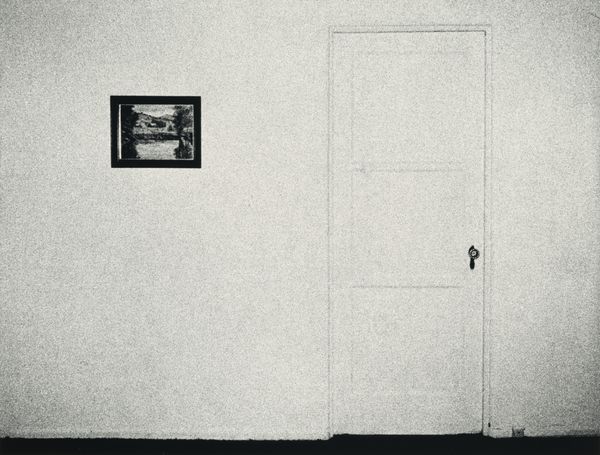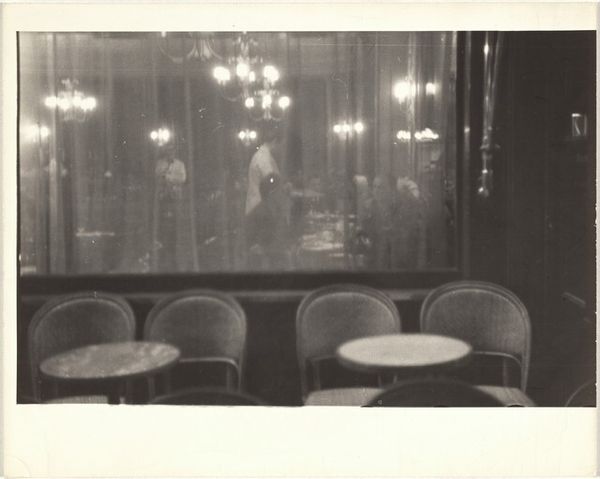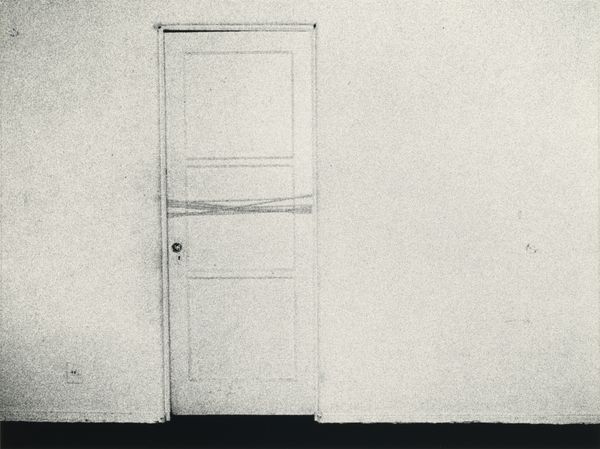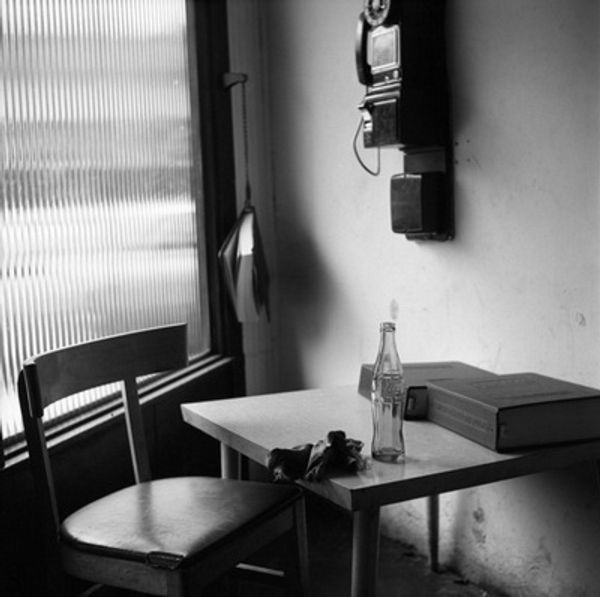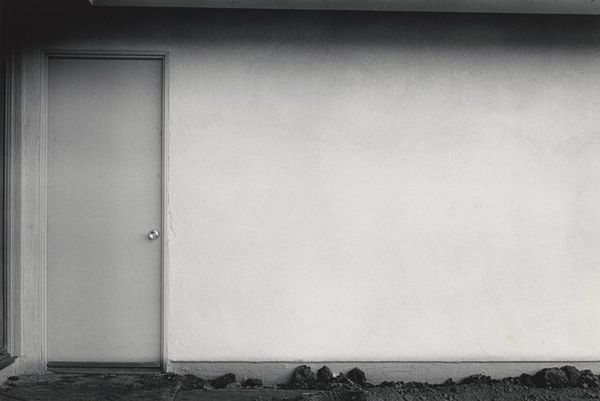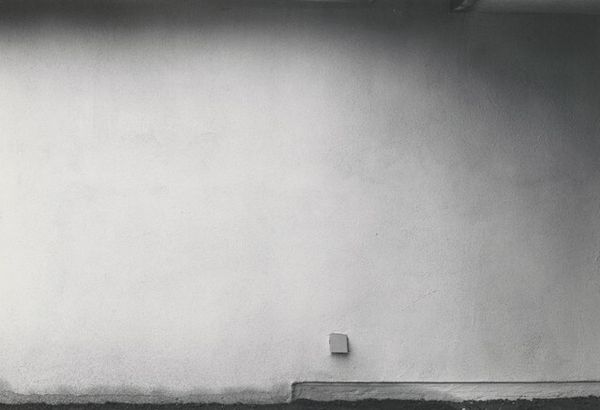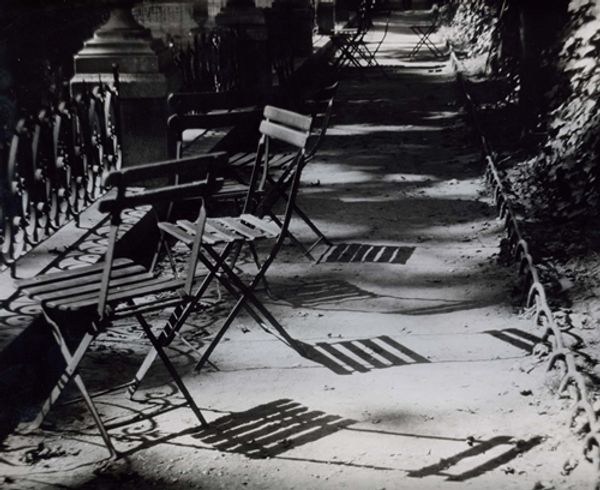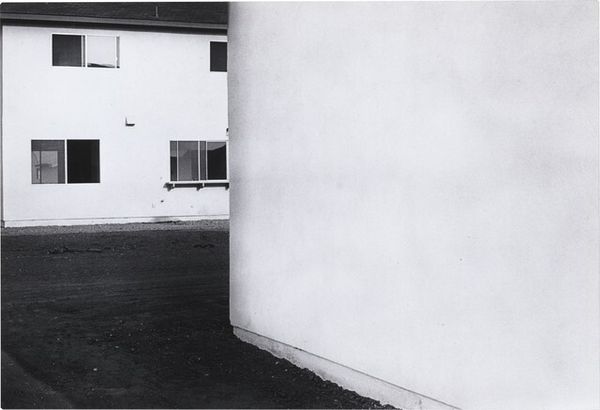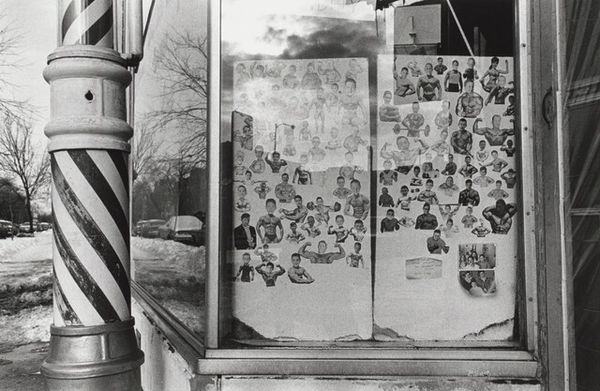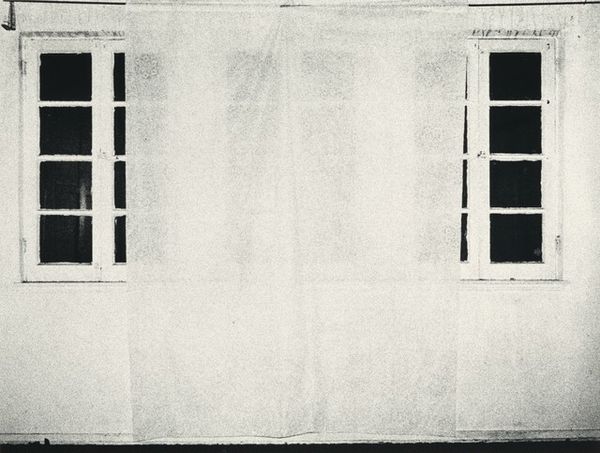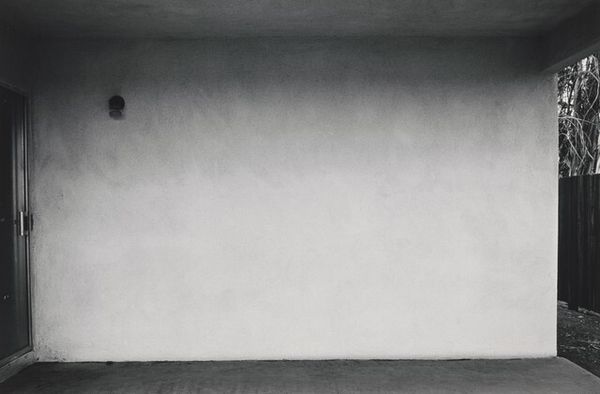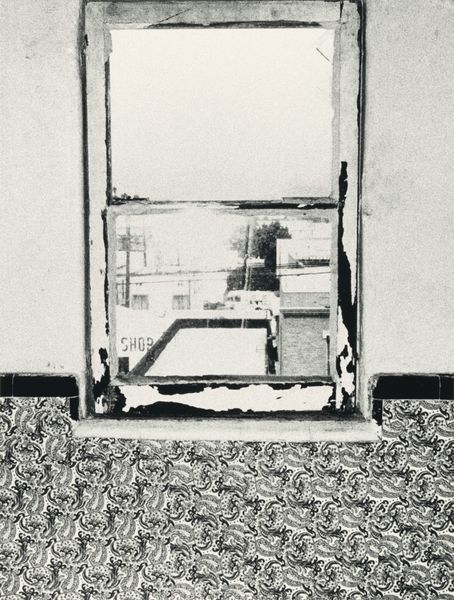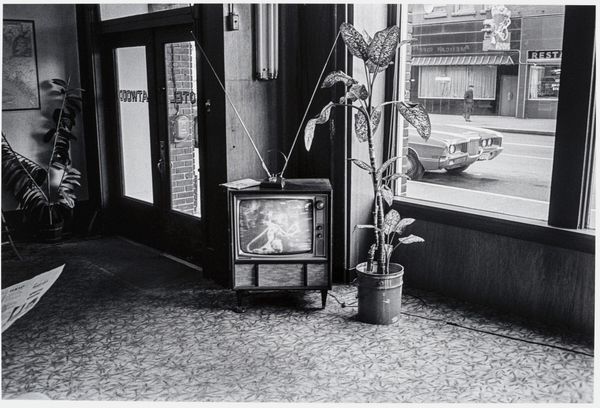
photography
#
black and white photography
#
street-photography
#
photography
#
geometric
#
black and white
#
exhibition
Dimensions: image: 19.05 × 29.21 cm (7 1/2 × 11 1/2 in.) sheet: 27.94 × 35.56 cm (11 × 14 in.)
Copyright: National Gallery of Art: CC0 1.0
Curator: This photograph, simply titled "Atlantic City", is by Richard Gordon and its precise date is uncertain, placed somewhere between 1973 and 1994. The photographic process itself is key to its power. Editor: The black and white immediately casts a mood—isolated. Those empty chairs, the starkness… It's a photograph of quiet desolation, somehow. The reflections complicate the reading, of course, but it feels decidedly lonely. Curator: I see it as a commentary on urban spaces, framed by Gordon's commitment to street photography as a means to understanding societal shifts. Look closely at the window reflections layered over the interior space—a comment, perhaps, on authenticity and representation. The chairs almost feel like an audience in anticipation, yet they are empty, creating tension. Editor: It’s interesting you mention the societal shifts. I’m struck by the layering of surfaces. The materiality, or lack thereof: solid chairs contrasted with vaporous reflections—of a passing vehicle, signage that implies product and perhaps even commodity. Do these material illusions speak to shifting economic realities or promise a spectacle? Curator: Precisely! Consider Atlantic City during that era—a city grappling with economic decline and reinvention through gambling. The chairs, repetitive and uniform, may represent the masses who come seeking fortune, but find themselves waiting. We could see that geometry and repetition through a feminist lens. Editor: The actual printing process likely contributes to this sense of texture, layering reality. It adds depth—visual information as physical substance, a critical move in undermining hierarchies that privilege clean photographic vision over an attention to material details and processes. Curator: Absolutely. What also strikes me is the implication of absence. Who are these chairs for? Who once sat in them, and why are they empty now? The ghost of a consumer market? This relates to much of the debate about economic structures of inequality that disproportionately affect working class communities. Editor: The choice of materials certainly drives home that feeling— utilitarian seating, unadorned and functional. The photo speaks to a working class aesthetic. It is a powerful statement that connects process and subject. Curator: Seeing it as a critical, if muted, lens of its socio-economic environment allows me to move beyond the simple geometric aesthetic and see it in the light of labour, identity, class, and race. Editor: I find myself wondering what kind of darkroom Gordon used, and the kind of paper he printed the image on...it gives so much to understanding the textures. Curator: Considering Gordon’s social milieu adds additional, crucial dimensions to the interpretation of the chairs' emptiness. Editor: And the choice of materials contributes much to that overall effect, offering layers to interpretation beyond initial viewing.
Comments
No comments
Be the first to comment and join the conversation on the ultimate creative platform.
